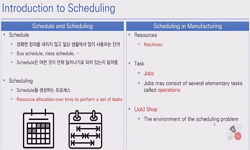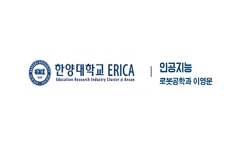Hyperspectral imaging technology has emerged as an non-destructive and reliable analysis and discriminant technology for agri-food safety assessment. The technology provides the 3D cub e data with spatial and spectral data. The size of the 3D cube dat...
http://chineseinput.net/에서 pinyin(병음)방식으로 중국어를 변환할 수 있습니다.
변환된 중국어를 복사하여 사용하시면 됩니다.
- 中文 을 입력하시려면 zhongwen을 입력하시고 space를누르시면됩니다.
- 北京 을 입력하시려면 beijing을 입력하시고 space를 누르시면 됩니다.
Classification model using subset feature based on a genetic algorithm of VNIR hyperspectral imaging data for organic residuals = Classification model using subset feature based on a genetic algorithm of VNIR hyperspectral imaging data for organic residuals
한글로보기https://www.riss.kr/link?id=A107140010
- 저자
- 발행기관
- 학술지명
- 권호사항
-
발행연도
2020
-
작성언어
-
- 주제어
-
자료형태
학술저널
-
수록면
114-114(1쪽)
- 제공처
-
0
상세조회 -
0
다운로드
부가정보
다국어 초록 (Multilingual Abstract)
Hyperspectral imaging technology has emerged as an non-destructive and reliable analysis and discriminant technology for agri-food safety assessment. The technology provides the 3D cub e data with spatial and spectral data. The size of the 3D cube data set is larger than hundreds MB (in the case of 1000 pixels × 1004 pixels × 128 bands). The real-time detection and classification technology is essential for food safety assessment. To reduce the size of data is finding the optimal bands from the whole spectral data. In this study, a genetic algorithm (GA) is implemented to find subset features from 128 wavelengths and applied to develop a classification model. On the stainless steel plate, six spinach droplets were placed on each well according to the concentrations. Original juice of spinach is 100%, and additional five levels were diluted with distilled water as follows: 1:5 (20%), 1:10 (10%), 1:20 (5%), 1:50 (2%), and 1:100 (1%), respectively. VNIR hyperspectral images were obtained using a line-scan hyperspectral imaging system and concentration prediction models were developed with multivariate analysis methods. Support vector machine with 39 selected bands using the genetic algorithm showed accuracy a s 90.65% and the kappa coefficient was 0.88. The overall accuracy of PLS-DA and LDA showed reasonable accuracy as 72.13% and 85.06%, respectively. Using feature selection such as gen etic algorithm, we can reduce the dimensionality of the 3D cube data so that it is helpful to develop a rapid and real-time classifier for food safety. VNIR (400-1000 nm) hyperspectral imaging system and chemometric classification models with sub-set data based on genetic algorithm showed a potential for developing an safety assessment technology for agro-food processing machines or facilities.
동일학술지(권/호) 다른 논문
-
- 한국농업기계학회
- 김은국 ( Eunkuk Kim )
- 2020
-
스마트 팜 테스트 베드에서 신·재생에너지를 이용한 하이브리드 시스템의 온실 난방에 대한 실증적 연구
- 한국농업기계학회
- 이충건 ( Chung-geon Lee )
- 2020
-
- 한국농업기계학회
- 이동관 ( Donggawn Lee )
- 2020
-
- 한국농업기계학회
- 한규강 ( Gyu Gang Han )
- 2020





 KISS
KISS





